Skateboarding in the street – Exploring the Urban Landscape
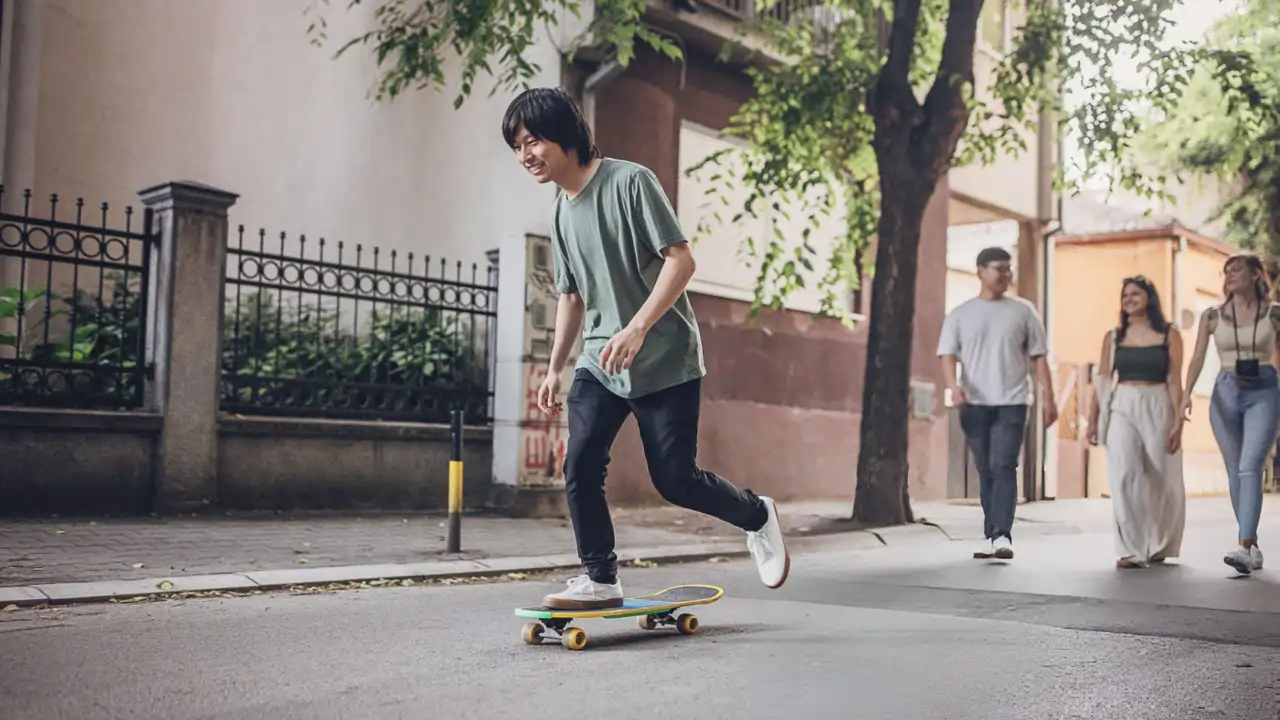
What is skateboarding in the street?
Skateboarding in the street is a sport that primarily involves riding a skateboard through urban environments, utilizing the terrain’s features to perform tricks and maneuvers. It is a type of skateboarding that uses streets, plazas, and alleyways as its playground rather than specialized ramps and parks as in vert skateboarding.
Table of Contents
The Relevance of Street Skateboarding
Street skateboarding stands out as a symbol of rebellion and individuality in an era of conformity and routine. It offers participants a break from the mundane, allowing them to explore their surroundings with fresh eyes and a daring spirit that takes them out of their comfort zone. In addition, skateboarding serves as a form of self-expression, as riders can express their creativity and style through skating, leaving their mark on the urban landscape.
History of Skateboarding in the street
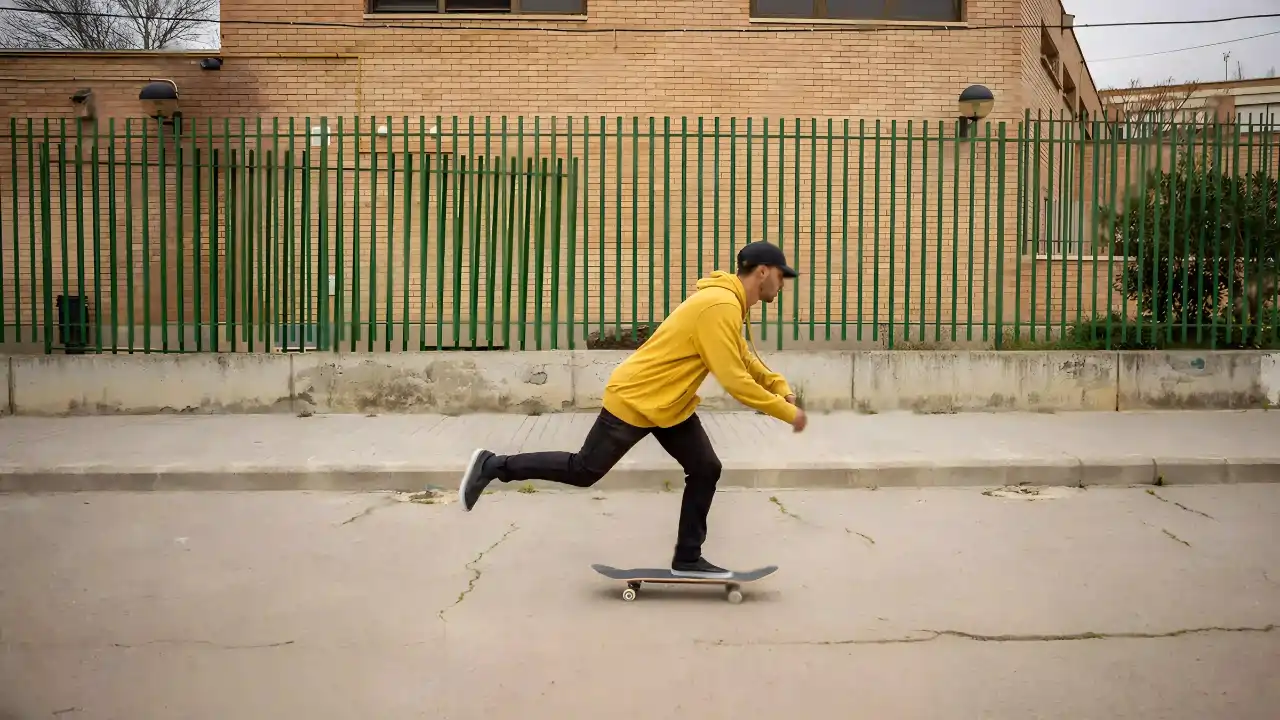
Origins of Street Skateboarding
Historically, street skateboarding can be traced back to the streets of California in the 1940s and 1950s, when surfers began to seek ways to replicate the feeling of riding waves on land using skateboards. As riders experimented with new tricks and techniques inspired by surfing and other board sports, what started as an activity known as “sidewalk surfing” gradually developed into street skateboarding.
Evolution of Skateboarding in the street Culture
It is no secret that street skateboarding has undergone numerous transformations throughout the decades, influenced by several factors, such as technology, music, and fashion. Whether it was the gritty streets of Dogtown in the 1970s or the polished plazas of the 1990s, each era left its mark on the culture, shaping how riders approached their craft and interacted with their surroundings.
Equipment and Gear
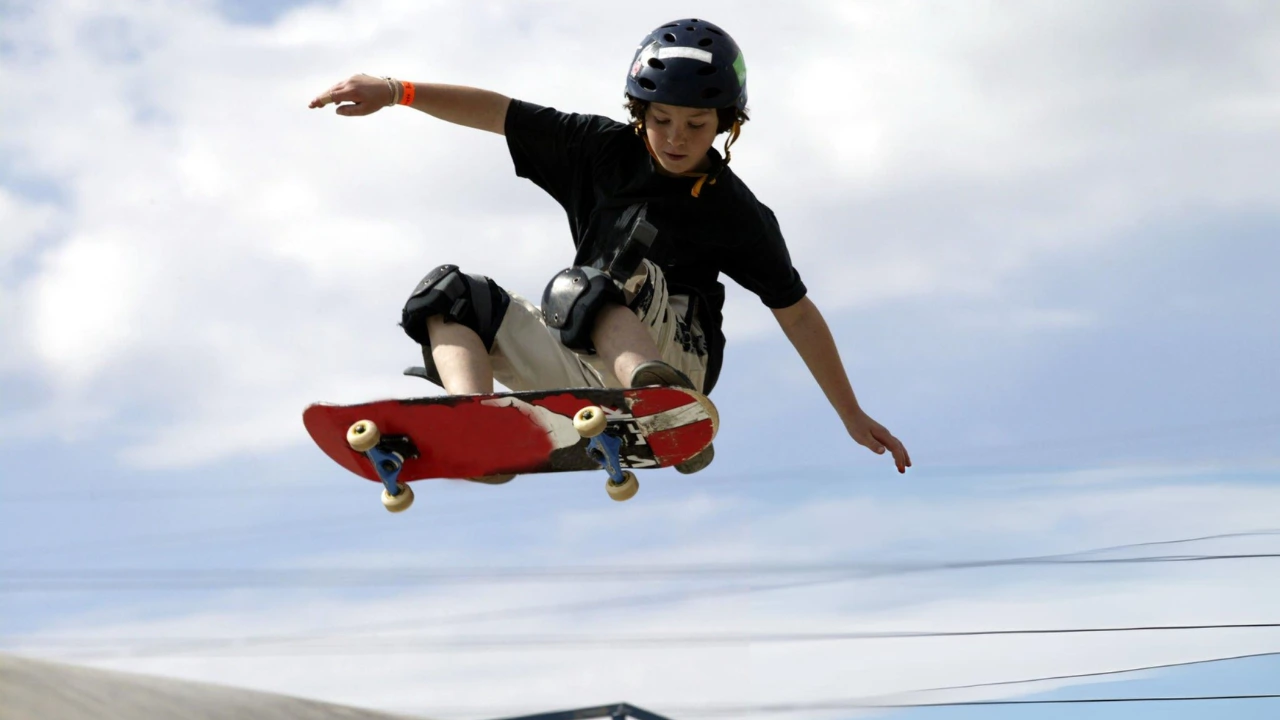
Skateboard Types and Features
A typical skateboard consists of several components, such as a deck, trucks, wheels, bearings, and a few others. Deck sizes and shapes differ from one skater to another, depending on the rider’s preferences. However, street skaters choose smaller, more maneuverable boards that are more suitable for maneuvering obstacles and performing tricks with greater precision and control.
Essential Safety Gear for Skateboarding in the street
Skateboarders on the street should always prioritize safety. Riders should invest in protective equipment such as knee pads, elbow pads, and wrist guards, in addition to helmets, to minimize the risk of injury while performing tricks or riding in high-traffic areas.
Techniques and Tricks
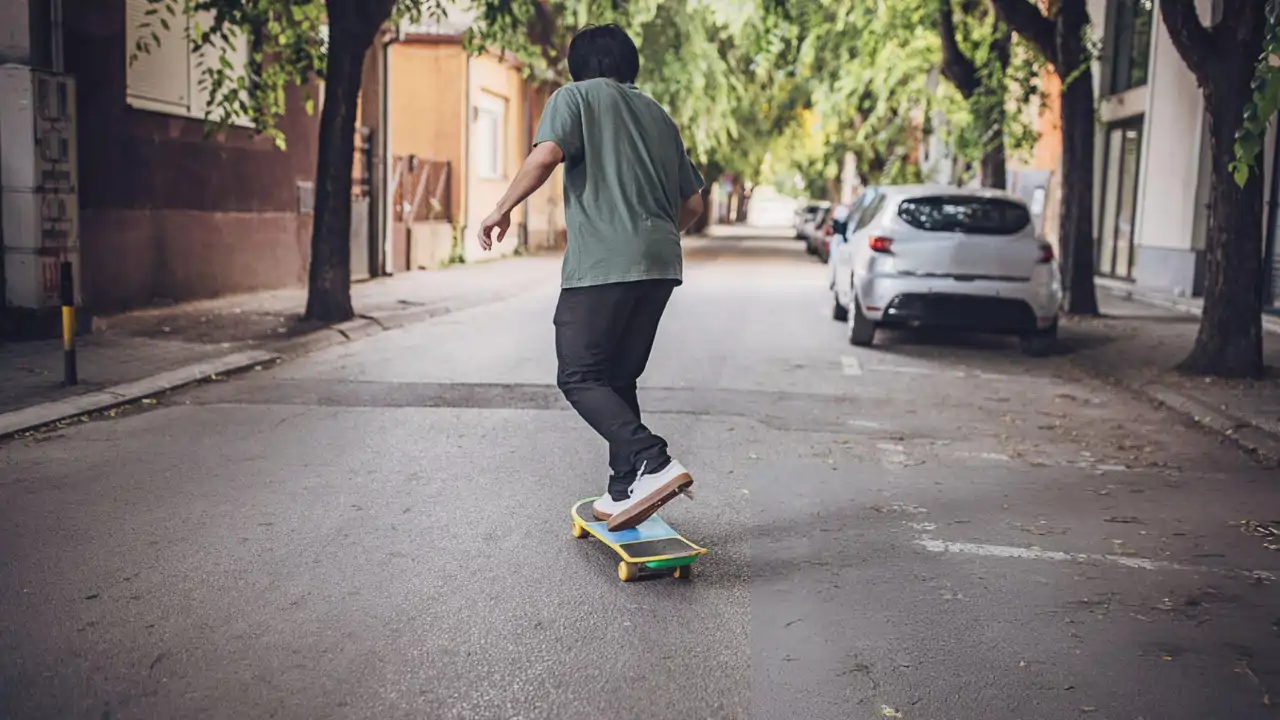
Basic Street Skateboarding Maneuvers
If you are a beginner looking to get into skateboarding in the street, you should familiarize yourself with fundamental maneuvers such as ollies, kickflips, and grinds to begin your journey. As a result of these foundational tricks, skaters are provided with a solid framework for mastering the art of street skateboarding. They can build on these foundations for more advanced techniques.
Advanced Tricks and Techniques
If you are an experienced skateboarder looking for a challenge, there is no shortage of options. The pursuit of pushing the boundaries of what’s possible on a skateboard is an ever-expanding one, from flip tricks such as heelflips and varial flips to technical grinds and slides. To master these tricks, however, one needs to be dedicated, patient, and willing to accept failure as a part of the learning process to become proficient.
Skateboarding Locations
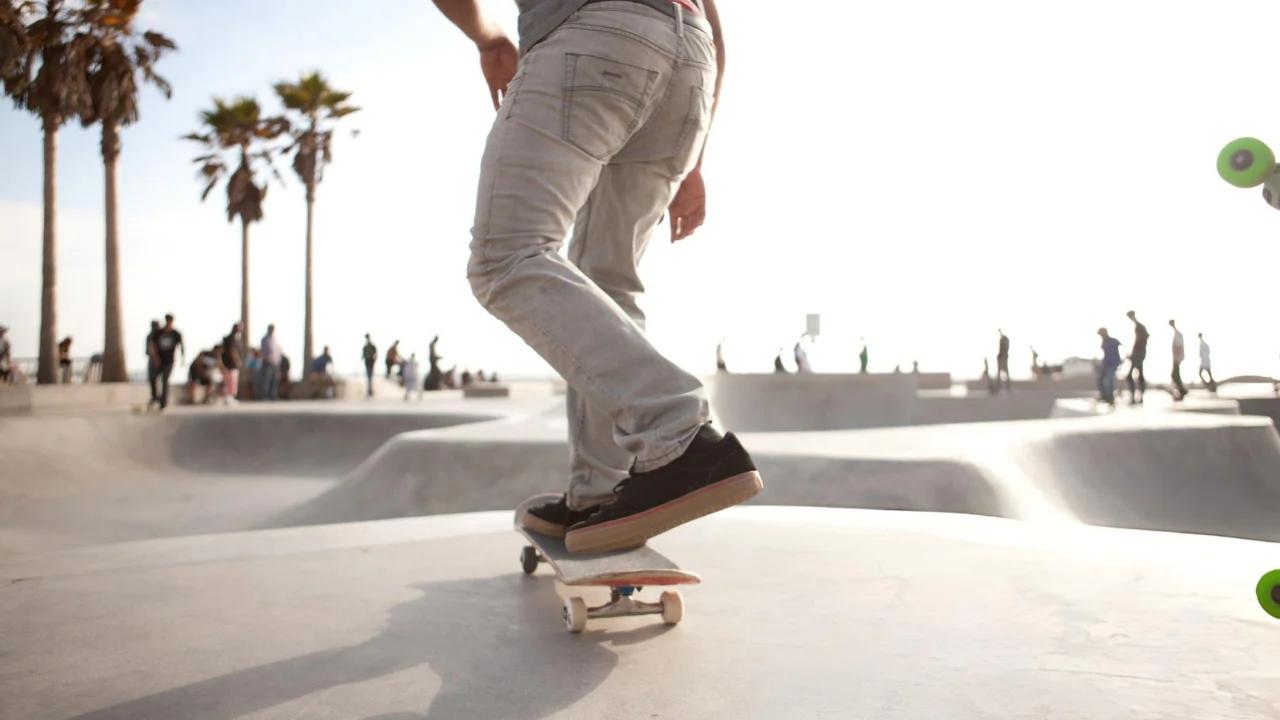
Ideal Street Skateboarding Spots
One of the most defining characteristics of street skateboarding is its ability to adapt to various environments in which it can be practiced. There is no doubt that street skateboarders find inspiration in the most unlikely of places, from abandoned warehouses and parking lots to public parks and plazas. Despite this, some areas stand out as iconic hubs for urban shredding, drawing riders worldwide to test their skills on iconic spots, such as Love Park in Philadelphia or MACBA in Barcelona.
Legalities and Regulations Regarding Street Skateboarding
While street skateboarding offers unparalleled freedom and creativity, it also comes with its fair share of challenges, including navigating legal obstacles and facing scrutiny from authorities. The majority of cities have imposed restrictions on skateboarding in public spaces due to concerns about property damage and public safety. Skateboarding advocates, however, continue pushing for greater recognition and acceptance of street skateboarding as a legitimate form of recreation through grassroots efforts led by skateboarding advocates.
Street Skateboarding Subculture
Influence of Street Skateboarding on Youth Culture
The influence of skateboarding in the street extends far beyond the confines of the skatepark, ranging from fashion trends to music and art. As a result, countless subcultures and movements have been inspired by it, giving young people a way to express themselves and interact with the world around them. Street skateboarding fosters camaraderie and community among like-minded individuals seeking adventure and self-discovery through DIY skate videos or underground zines produced by like-minded individuals seeking adventure and self-discovery.
Street Skateboarding Communities and Events
It is important to stress that at the heart of skateboarding in the street lies a vibrant community that is united by a passion for pushing boundaries and challenging the status quo. Several local skate shops, DIY skate parks, and online forums serve as gathering places for riders of all levels to connect, share ideas, and support one another in their respective endeavors. The great bonus is that events, like Go Skateboarding Day and street skateboarding competitions, allow riders to showcase their skills and celebrate the culture they love.
Health Benefits and Risks
Physical Fitness Benefits of Street Skateboarding
Street skating has many benefits, including the fact that it offers a full-body workout that engages muscles throughout the body, including the core, legs, and arms. In addition to the explosive power of popping tricks and the balance and coordination required to perform precise maneuvers, every aspect of street skateboarding is designed to improve your strength, agility, and endurance. In addition, skating is known for its cardiovascular benefits, which can help reduce the risk of heart disease and improve overall fitness levels.
Common Injuries and Safety Precautions
In spite of the numerous benefits of street skateboarding, some inherent risks are still associated with it, including the potential for falls, collisions, and overuse injuries. It is common for street skateboarders to suffer sprained ankles, wrist fractures, and concussions, which highlights the importance of taking the necessary precautions to stay safe on the street.
Street Skateboarding Industry
Economic Impact of Street Skateboarding
The skateboarding industry has grown from a grassroots movement into a multi-billion-dollar industry, with skateboarding brands and companies driving innovation and growth in a market that began as a grassroots movement. Skateboarding-related products continue to thrive on the market, from skate decks and apparel to footwear and accessories, creating many economic opportunities for entrepreneurs and creators alike.
Major Brands and Influencers in the Street Skateboarding Industry
As the street skateboarding industry is home to a wide range of brands and influencers, many names stand out as trailblazers and trendsetters in the industry. Vans and Thrasher are iconic skate companies that have played a major role in shaping the culture and driving the industry forward for decades. In contrast, riders like Tony Hawk and Rodney Mullen have played a significant role in shaping the culture and driving the industry forward for decades.
Conclusion
Many aspects of street skateboarding make it more than just a sport. It is a way of life, a culture, and a community founded on passion, creativity, and camaraderie. From the streets of Los Angeles to the alleyways of Tokyo, riders from all corners are united by a love for pushing boundaries and exploring the world around them on four wheels, no matter where they ride. Even though street skateboarding continues to evolve and adapt to the changing times, one thing remains constant: the ability of street skateboarding to inspire, empower, and captivate generations of riders worldwide.
Frequently Asked Questions (FAQs)
What street skating is all about?
The street skateboarding style entails riding and performing tricks on urban terrains such as streets, sidewalks, plazas, and stairways to perform tricks on urban terrains. Street skateboarding differs from vert skateboarding, which takes place in specially designed ramps and parks since it relies on the natural features of the urban environment as a source of creative expression and trick execution.
Do I need any special equipment to skate on the streets?
Skateboarding is primarily done on a skateboard, composed of a deck, trucks, wheels, bearings, and bearings, which are the primary parts of the skateboard. In addition, safety gear such as helmets, kneepads, elbow pads, and wrist guards are essential to protecting against injuries when performing tricks or riding in areas with a lot of traffic.
Do you have any tips on how to skateboard on the street?
Street skating offers various tricks, from basic maneuvers to advanced ones. Some commonly used tricks are ollies, kickflips, heelflips, grinds, slides, and manuals. Several obstacles found in urban settings, such as stairs, ledges, rails, and curbs, can be used for these tricks.
